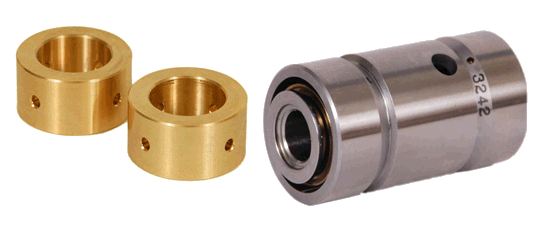Turbocharging
Turbocharging is arguably the best bang for your buck in power output for any engine and 3800's are no exception.
Some of the biggest benefits to turbocharging are:
- Nearly negligible power necessary to drive the turbocharger
- More efficient than most superchargers
- Wide variety in turbo size available for whatever power level you want to make
- Simpler and cheaper to add an intercooler than with supercharging.
- Easy to upgrade to a larger turbo down the road.
It's pretty important to keep charge air temperatures down on a 3800. Switching to a turbo makes this pretty simple and can easily net a lot of power just by converting a supercharged car to turbo with the same boost pressure. An intercooler is definitely recommended as well.
Turbo Sizing
Generally when picking a turbo you should match the turbo size to the engine perfectly based on power goals and a few details of the engine such as volumetric efficiency, displacement, and rev range. There are a lot of factors into sizing a turbo though and most guides on the internet are pretty loose in determining what should be run with each motor.
Too small of a compressor on the turbo will result in the turbo spinning itself out of its efficiency map, creating a lot of heat, and becoming a restriction on power.
Too large of a compressor could result in a turbo that needs a lot of rpm to spool up and create boost, or in the worst case scenario could cause compressor surge.
Too small of a turbine housing would cause extremely quick spool times, but would choke the motor from making power in the higher rpm ranges.
Too large of a turbine housing would cause very laggy spool times.
Every turbo will be different in the amount of power it can make and how quickly it will spool. Turbocharger technology has come a long way since the 90's so a more modern turbocharger might be a better option than an older design.
Generally a good street turbo size would be in the 56-62mm range on the compressor housing. These will have very quick spool times and can likely make 500-600 wheel horsepower depending on the rest of the setup.
Generally a medium performance size would be in the 60-68mm range. These can make around 600 wheel horsepower depending on the turbo and the intercooling setup.
![Turbocharger internal components [1] | Download Scientific Diagram Turbocharger internal components [1] | Download Scientific Diagram](/lib/exe/fetch.php?tok=c42703&media=https%3A%2F%2Fwww.researchgate.net%2Fprofile%2FShahab_Alaviyoun%2Fpublication%2F323279786%2Ffigure%2Ffig1%2FAS%3A596027748937729%401519115497755%2FTurbocharger-internal-components-1.png)
Other Considerations on Turbo Selection
Bearings
Generally most older turbochargers will use a journal bearing that only requires oil to lubricate and cool the bearings.
Newer turbos will use ball bearings in the compressor housing and will typically use engine coolant to help cool the bearings as well as oil to lubricate them.
Generally ball bearing turbos can spool faster and create less pre-turbo back pressure due to the decrease in friction in the bearings.

A ball-bearing turbocharger with a billet compressor wheel will spool faster and have more room to make power than a similarly sized journal bearing turbo.
Compressor Wheel
Some turbos will also have billet aluminum compressor wheels that will help speed up the spool times due to the decrease in rotating mass.
Other main factors that can improve spool times are:
- variable vane technology usage
- twin-scroll turbine housings
- size of the turbine housing and turbine itself
- A/R ratio of compressor and turbine housing
- camshaft selection
However there a lot of other things that play a big factor here as well. This are just some of the more commonly discussed heavy hitters.